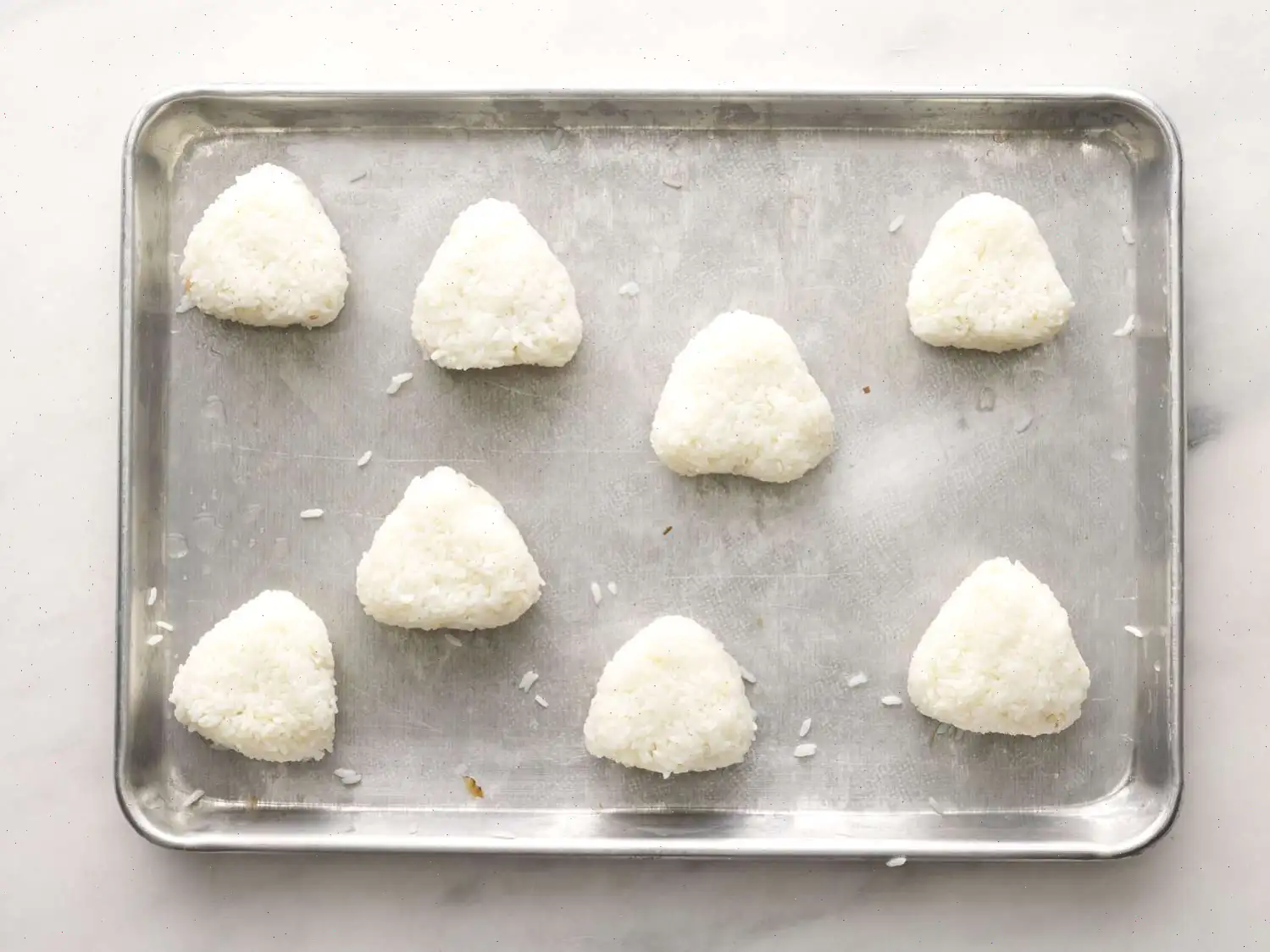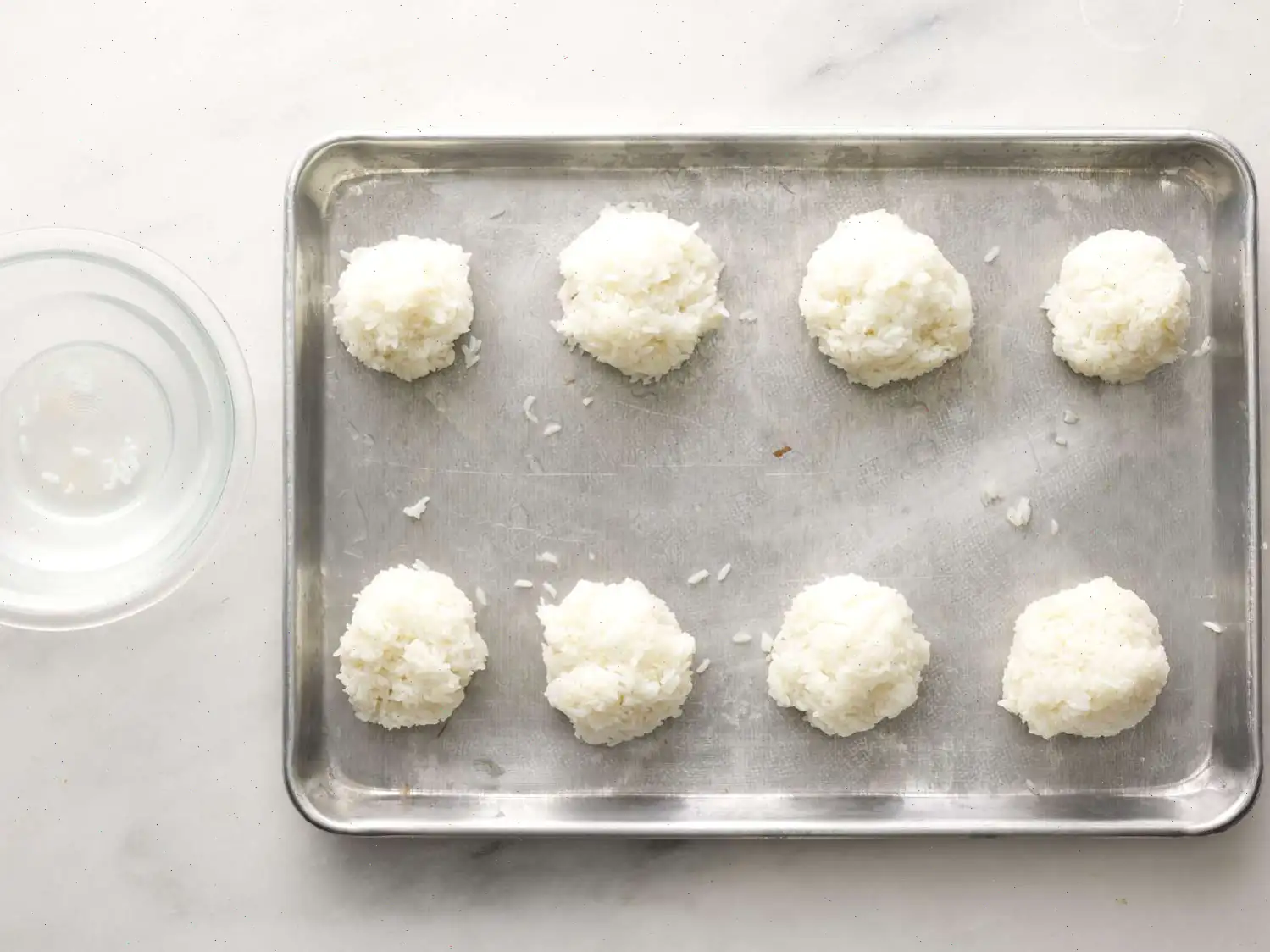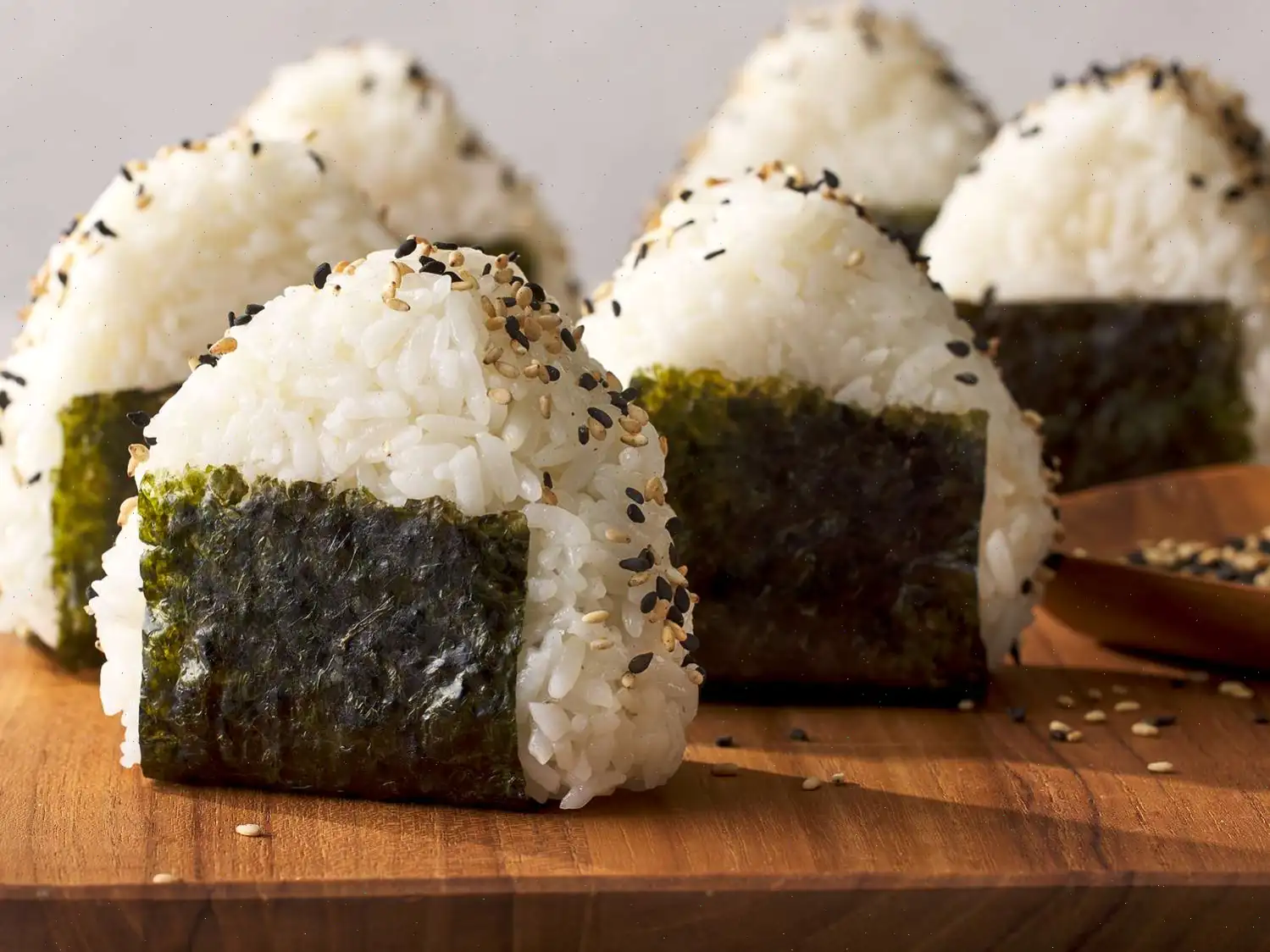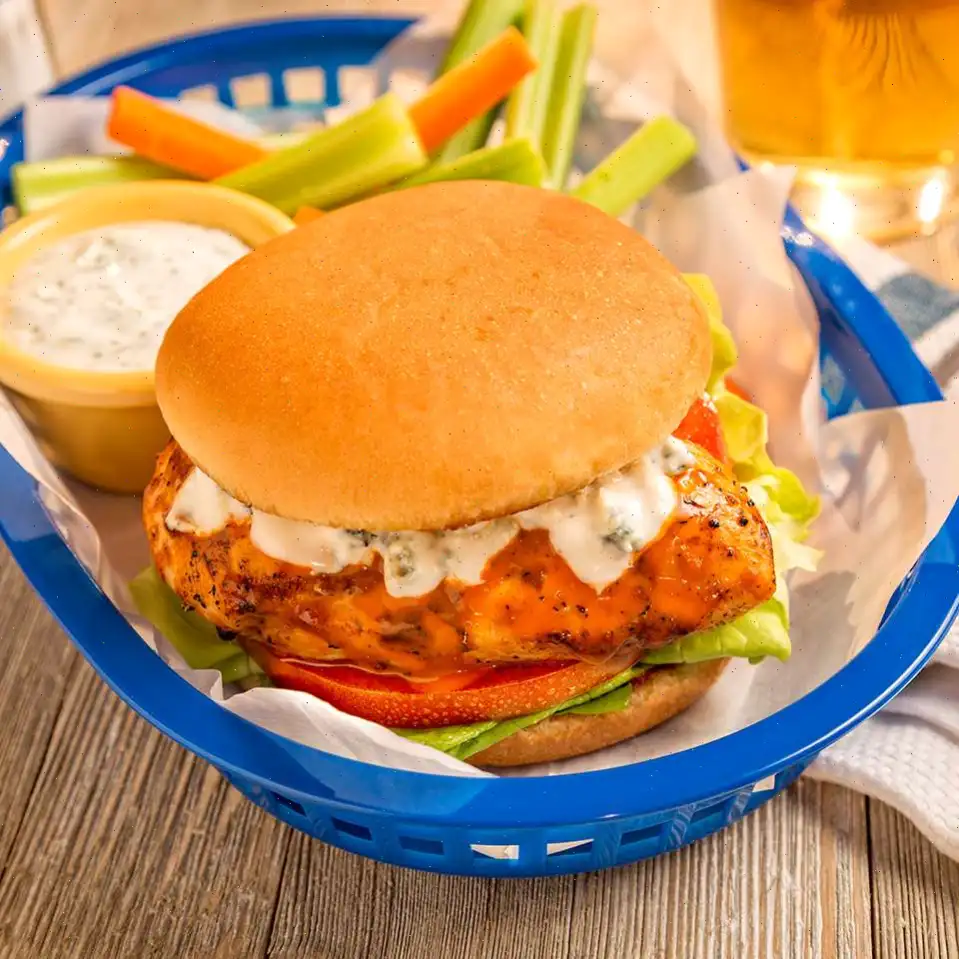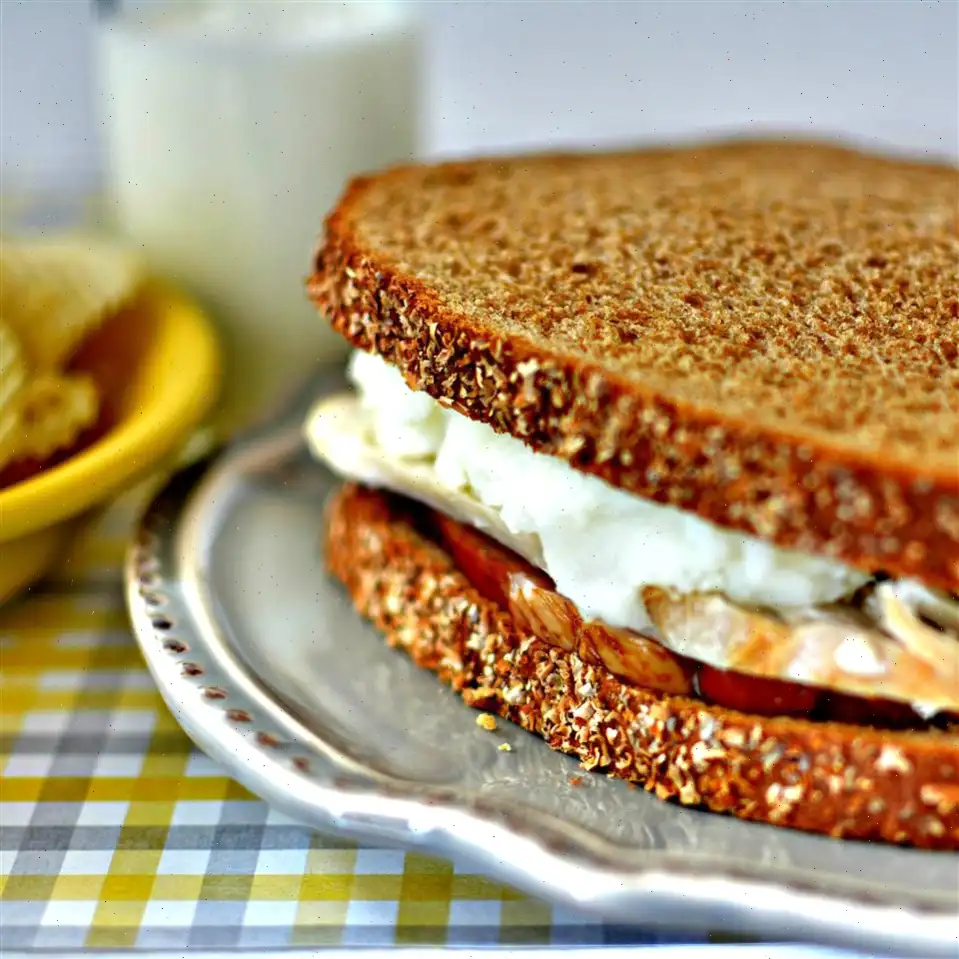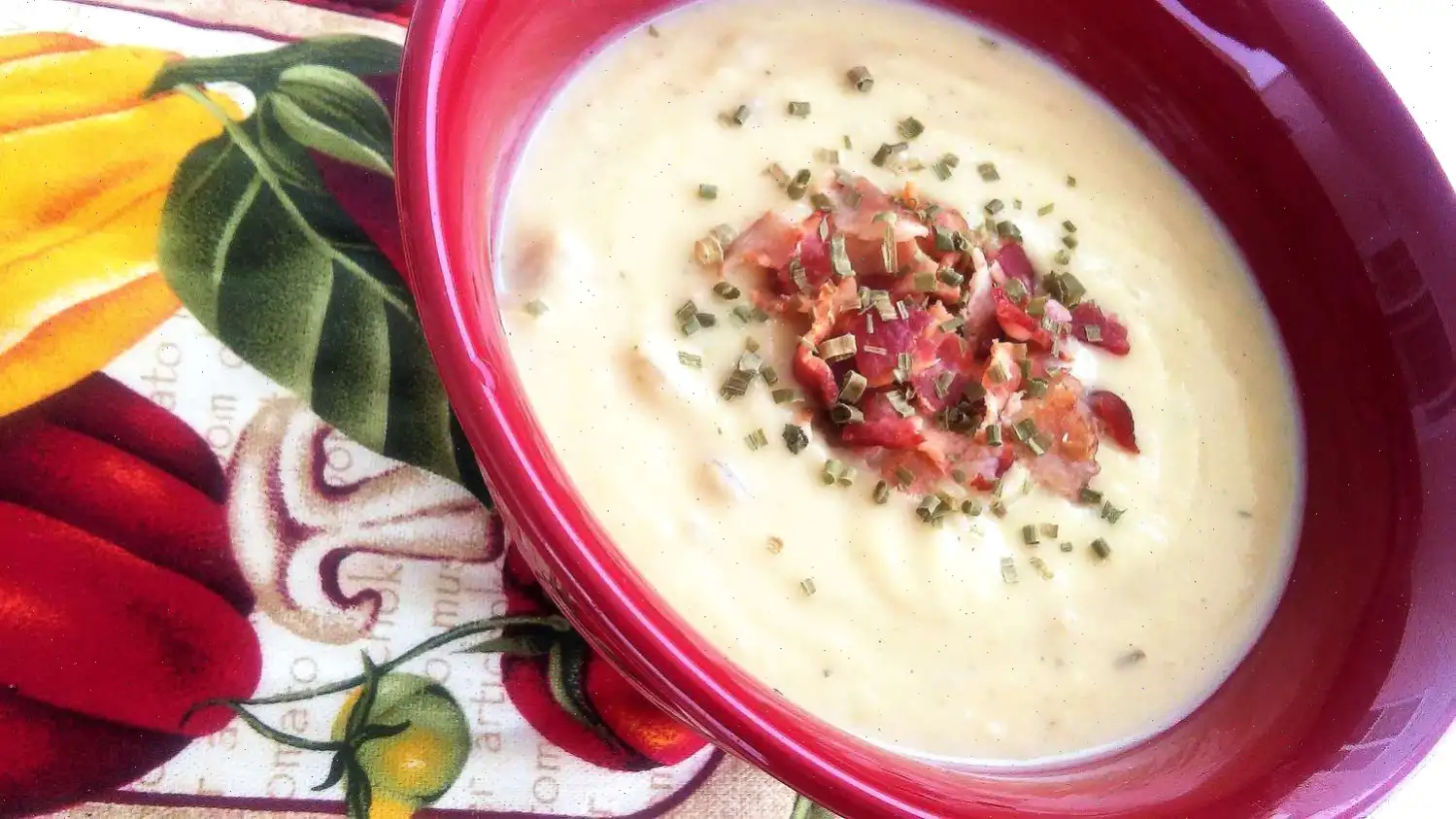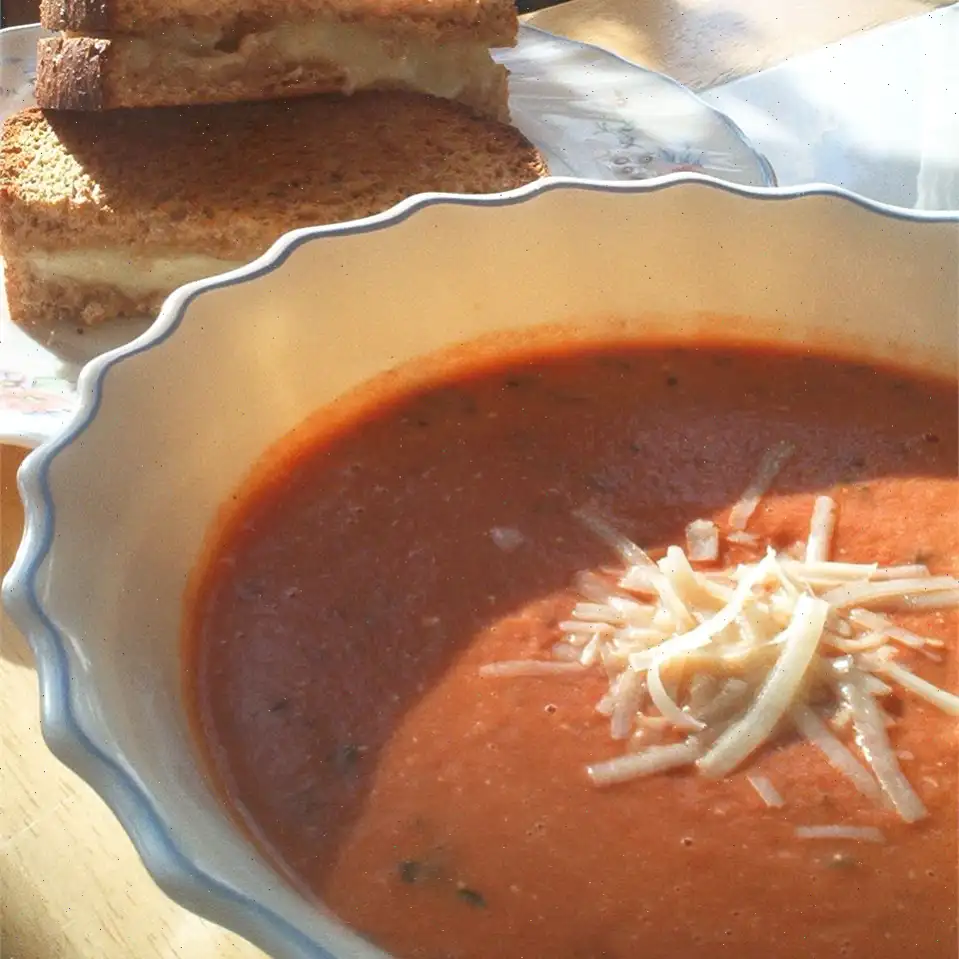
Onigiri (Japanese Rice Balls) Recipe
Ingredients
This recipe was developed at its original yield. Ingredient amounts are automatically adjusted, but cooking times and steps remain unchanged. Note that not all recipes scale perfectly.
- 4 cups uncooked short-grain white rice
- 5 cups water, divided
- teaspoon salt
- cup bonito shavings (dry fish flakes)
- 2 sheets nori (dry seaweed), cut into 1/2-inch strips
- 2 tablespoons sesame seeds
Directions
- Wash rice in a mesh strainer until the water runs clear. Combine the washed rice with 4 cups of water in a saucepan.
- Bring the mixture to a boil over high heat, stirring occasionally. Once it reaches a boil, reduce the heat to low, cover, and simmer the rice until the water is absorbed, about 15 to 20 minutes.
- After the water is absorbed, let the rice rest, covered, for 15 minutes. This will allow the rice to continue steaming and become tender.
- Once the rice is done, allow it to cool slightly. In a small bowl, combine the remaining 1 cup of water with the salt. Use this salted water to dampen your hands before handling the rice.
- Divide the cooled rice into 8 equal portions, using one portion for each onigiri.
- Take one portion of rice and divide it in half. Create a small dimple in the rice and fill it with a heaping teaspoon of bonito flakes.
- Cover the bonito flakes with the other half of the rice portion and press gently to seal the filling inside the rice ball.
- Shape the rice into a triangle by gently pressing it with your hands. Wrap a strip of nori around the rice ball and sprinkle with sesame seeds to finish.
- Repeat the process for the remaining portions of rice, shaping each into an onigiri and garnishing with nori and sesame seeds.
Nutrition Facts (per serving)
| Amount | Daily Value * |
|---|---|
| Calories | 744 |
| Total Fat | 3g (4%) |
| Saturated Fat | 1g (3%) |
| Sodium | 160mg (7%) |
| Total Carbohydrate | 159g (58%) |
| Dietary Fiber | 6g (22%) |
| Total Sugars | 1g |
| Protein | 14g (29%) |
| Vitamin C | 1mg (1%) |
| Calcium | 61mg (5%) |
| Iron | 9mg (51%) |
| Potassium | 181mg (4%) |

Onigiri, also known as Japanese rice balls, is a traditional dish in Japanese cuisine. These small, hand-shaped rice portions are often filled with a variety of ingredients and wrapped in seaweed, making them both portable and flavorful. Though onigiri is a simple dish at first glance, it carries deep cultural significance in Japan and has been a staple of the Japanese diet for centuries. The following explores the fascinating history, regional variations, and cultural relevance of this iconic food.
History and Origins of Onigiri
The origins of onigiri can be traced back to ancient Japan. Initially, rice was considered a sacred food, and it was often offered to deities in its natural form. The practice of shaping rice into small balls or triangular shapes likely began during the Heian period (794-1185). Early versions of onigiri were often seasoned with salt or wrapped in leaves to preserve them for long journeys. Onigiri was particularly popular among samurais and travelers as a portable, easily consumable food.
Over the centuries, onigiri evolved from simple rice balls to include various fillings such as pickled plums (umeboshi), salted fish, and even modern-day tuna or chicken salad. Today, onigiri is enjoyed by people of all ages and is often associated with Japanese picnics, bento boxes, and casual meals.
Regional Variations of Onigiri
Although onigiri is universally recognized across Japan, the fillings and preparation methods can vary depending on the region. In the Kanto region (which includes Tokyo), onigiri is often served with simple fillings such as salted salmon or pickled plum. In contrast, the Kansai region (including Osaka and Kyoto) tends to feature more elaborate fillings like rice with seasonings or cooked vegetables.
In Hokkaido, the northernmost island, onigiri may be filled with ingredients like ikura (salmon roe) or kelp, reflecting the regions abundant seafood. Onigiris versatility allows for regional creativity, where the filling combinations are endless, ranging from spicy tuna to even curry-flavored rice.
Differences from Similar Dishes
Onigiri is often compared to sushi, but the two dishes are quite different. Sushi involves vinegared rice that is usually served with raw fish, while onigiri is simply steamed rice, sometimes seasoned with salt, and filled with a variety of ingredients. Additionally, onigiri is usually eaten by hand, making it more of a snack or a lunch item, while sushi is often part of a larger meal served with condiments like soy sauce and wasabi.
Another dish that is sometimes confused with onigiri is the Korean "jumeokbap," which is also a rice ball. However, jumeokbap is typically made with short-grain rice, seasoned with sesame oil, and filled with vegetables, meat, or kimchi. Unlike onigiri, which is often wrapped in seaweed, jumeokbap tends to be served without any outer layer, allowing the rice to be the star of the dish.
Where to Find Onigiri
Onigiri is incredibly popular in Japan and can be found in convenience stores, grocery stores, and traditional Japanese eateries. Many convenience store chains, such as 7-Eleven, Lawson, and FamilyMart, offer a wide variety of pre-made onigiri, filled with everything from pickled plums to tuna mayo. These rice balls are perfect for a quick snack or a light meal on the go.
In Japan, onigiri is also commonly found in bento boxes, either as a main dish or a side. In recent years, onigiri has gained international popularity and can be found in Japanese restaurants or specialty shops in various countries, particularly in areas with a large Japanese community.
Interesting Facts About Onigiri
- Onigiri is sometimes referred to as "omusubi" or "musubi," both of which mean "to bind" or "to tie," reflecting the shape and structure of the rice ball.
- The triangular shape of onigiri is not only iconic but also practical, as it allows for easy handling and storage. Some say the shape was inspired by the mountains of Japan.
- In Japanese folklore, onigiri is said to have magical powers. The rice ball was believed to protect people from evil spirits, especially during long travels.
- Onigiri is often associated with comfort food, and many Japanese people have fond memories of their mothers or grandmothers preparing these rice balls for family picnics or school lunches.
Whether you're enjoying onigiri as a snack, a part of a traditional bento, or as a gourmet creation with modern fillings, it remains an enduring symbol of Japans culinary culture. Its history, regional variations, and global appeal show how simple ingredients can create something both nourishing and deeply connected to culture.
You can listen to this recipe in AI audio format. Simply click the play button below to listen to the content in a format that suits you best. It’s a great way to absorb information on the go!
FAQ about Onigiri (Japanese Rice Balls) Recipe
Comments
elyssa
10/06/2025 01:52:54 PM
very simple, i love making these either to snack on or for a dinner. my only change is i make a solution of white vinegar, about a cup, and 2 table spoons of sugar, and mix this with the rice before i begin. It adds just the right amount of flavor to the rice, so its not so over whelming. after adding the vinegar, just wet you hands and shape like always :D
NomNomDelicious
06/14/2010 05:40:40 PM
A good friend of mine that I met through anime conventions years ago was having a graduation party, and I knew a bunch of the anime crew would be there, so I thought I would make something fun as a snack! I came across this recipe after watching Fruits Basket with a friend and we decided it would be perfect. Made the first few rice balls using the recipe as-is, though we couldn't find bonito flakes, so we used some tuna salad, chicken salad and avocado instead. After making some of the plain rice ones, we elyssa's advice and added some rice vinegar, sugar and salt to the rice. The smell kind of scared us at first, but after tasting them, we were glad we did it! Both versions of the recipe get five stars from everyone at the party!
Dylan'smom
09/20/2012 10:43:39 AM
Thought everyone might want to know. When we make this (learned from my japanese mom), we put the bonito in the middle also. But, my mom puts soy sauce on the flakes first. It kind of melts down, but makes it easier to put in the middle and gives a nice salty kick. I can't imagine eating just plain flakes with out the soy on it. I've never seen it anywhere without the soy and bonito inside. Try some flaked salmon with soy also. That is how I've always seen it or bought in Japan. Also, most of the time she puts msg (or accent) on the outside or gives it a quick shake into the batch when shaping them. Actually, every one on my japanese side does it. I don't think that they has much of a problem with msg as they do here.
Kusani
09/09/2017 03:47:34 PM
I did something similar to elyssa and added 1/4 cup rice vinegar, 1 T of sugar, and 1 tsp salt to the rice to make it sticky and taste like typical sushi rice. Since the amount of rice actually made 9 onigiri, I made 3 with bonito, 3 with roe mixed with spicy mayo, and 3 with homemade crab mix. I also added a little soy sauce to the bonito like dylan'smom suggested - just have to be careful not to add too much! Overall, this is a great simple recipe to make and will be a repeat.
MrPinkdiamond10011
08/20/2019 02:51:01 PM
Simple base recipe works to give way to more variations. I would recommend adding a little rice vinegar to water, then sprinkle salt on your hands before handling the rice. This way the rice will not stick to your hands and the onigiri can be formed in its proper trangle shape.
rutabaga
02/27/2014 06:17:02 PM
I used our rice cooker's sushi setting to make the rice, so I can't speak for those instructions... but we followed everything else in order to make this yummy traditional snack (which I ironically first discovered at the local 7-Eleven's while studying abroad in Beijing!). For the filling: I used drained canned tuna fish mixed with dashi soup stock and Kewpie mayonnaise (Japanese mayo, and yes, it is different). I then topped with roasted sesame seeds and wrapped with nori. I don't think you can really go wrong with proportions here: just experiment until you find your nori size preference! My hubby likes less, I like more. P.S. Using somewhat less than crunchy nori is still okay for this recipe - a definite plus when trying to use up leftover nori from that sushi night a few weeks ago!
redheadedwonder11
03/20/2014 06:51:41 PM
Great recipe! I used other reviewer suggestions and mixed 1C vinegar/2 TBSP sugar mixture in with the rice before forming it as well as adding soya sauce to the bonito. I found the salt water mixture invaluable to keep the rice from sticking to my hands. At first, I just dipped my fingertips, but dipping my entire hand worked much better. Next time, I am going to try a salmon filling or pickled plums (umeboshi) on at least some of them.
just for you
03/02/2010 10:46:49 AM
I made this recipe for rice balls for my daughters international night. They turned out great! I made the mini balls and put canned salmon bits and spiced ginger in the center. I rolled them in black and white seseme seeds and put dried seaweed on others. The teens at the school loved them. I found great directions in the internet for rolling and twisting them in wet salted plastic wrap which took all the air out and made them nice and firm. (then take them out of the plastic wrap)The key is to always handle them with wet hands.
cookingnow
08/18/2019 01:08:11 AM
Have been reading Musashi to my son and he eats rice balls throughout the book. I am familiar with a lot of Japanese dishes, but have never tried onigiri before. I decided to give them a try and the kids and I loved them! I filled them with tuna salad and chicken salad, wrapped a small piece of nori at the bottom and sprinkled the tops with vegetable furikake. They were delicious and my daughter who is a picky eater at 2 at lunch and then wanted them for dinner too! Definitely a hit and will make again!!
megan
04/16/2016 11:53:29 AM
Very nice . I found it nice making it with a sauce I used soy sauce , water , sugar and a tiny bit golden syrup to thicken it . Add as much sugar as U want some like it really sweet some like it salty with a tiny bit of sweetness . Its really nice, also I used cling film to get it to the desired shape also by using the cling film it helps the onigiri to hold its shape.
ToughSlaw9246
02/21/2025 06:48:09 PM
This was my first time making these so I kept it on the simple side in terms of flavorings. I did take a packet of miso soup flavorings and put it into the rice while it was cooking. After it was done and formed and ready to eat I tried it and thought it was a tad bland. So I froze the balls overnight. The next day I let them thaw out just on the surface and put out bowls of egg, cornstarch and panko. I rolled the balls in cornstarch and then in egg and finally in panko and then fried them. Wow! Crazy good, and I could dip them in several different types of Oriental sauce that I have. Ok, now I'm ready to step these up. I will be trying different types of fillings as well as some seaweed.
ToughSlaw9246
02/21/2025 06:48:09 PM
This was my first time making these so I kept it on the simple side in terms of flavorings. I did take a packet of miso soup flavorings and put it into the rice while it was cooking. After it was done and formed and ready to eat I tried it and thought it was a tad bland. So I froze the balls overnight. The next day I let them thaw out just on the surface and put out bowls of egg, cornstarch and panko. I rolled the balls in cornstarch and then in egg and finally in panko and then fried them. Wow! Crazy good, and I could dip them in several different types of Oriental sauce that I have. Ok, now I'm ready to step these up. I will be trying different types of fillings as well as some seaweed.
FunHen3805
02/19/2025 05:51:52 PM
It is divine! Every bite is a burst of flavor that leaves me craving more. I can’t help but dream about indulging in it again; it’s a truly irresistible delight that captivates my taste buds and ignites my passion for food!
SunnyHoney1694
12/10/2024 10:37:45 PM
It exploded :(
George Hill
10/12/2024 02:25:45 AM
Made it last night — already planning next batch.
BoldPulp4115
11/22/2023 06:40:42 PM
delicious worth an hour. my kids loved them sooooo much
Nina
11/09/2022 05:11:28 AM
It was super easy to make and tasted amazing
Trevaris Ward
05/02/2022 01:34:41 AM
Made them and inserted diced chicken with seasonings. Simple but AMAZING! Loved it.
Katie
06/18/2020 07:07:32 PM
I really liked this recipe, but I had to make smaller portions because the rice kept falling apart and I have small hands. Later I just started pressing the rice harder and it went together, but I still wasn’t able to make triangles so I just made balls. Overall this is a really great recipe that I would recommend!
MATTHEW VALDEZ
04/20/2020 10:37:14 PM
so much fun to make


